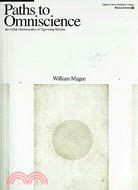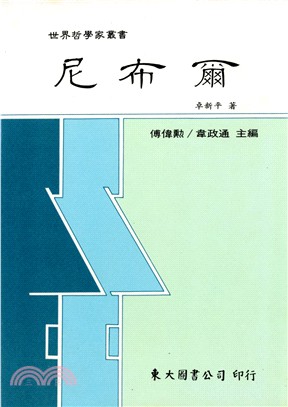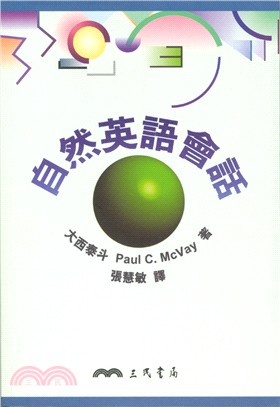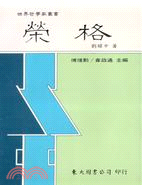Paths to omniscinence: the geluk hermeneutics of nga-wang-bel-den
商品資訊
再享89折,單本省下45元
商品簡介
Paths to Omniscience: the Geluk Hermeneutics of Nga-wāng-bel-den
Buddhism suggests that it is possible to investigate the nature of reality ourselves; but to do so one needs to differentiate definitive teachings from those of interpretable meaning. William Magee's book, Paths to Omniscience, discusses a number of topics related to the interpretation of scripture according to Dzong-ka-ba, Jam-yang-shay-ba, Nga-wāng-bel-den, and other great scholars of the Geluk world.
Paths to Omniscience also addresses the Geluk approach to the practice of hermeneutics. Even within the lineage itself, scholars have not always agreed about interpretation of scripture. Paths to Omniscience describes intricate maneuvers enlivening the spirited controversies of these emminent Lamas.
Paths to Omniscience also includes translations of thirty annotations from Nga-wāng-bel-den's Annotations for (Jam-yang-shay-ba's) “Great Exposition of Tenets”. These annotations show how diverse and wide-ranging a great commentarial author can be in his treatment of the basic text. Far from being mere footnotes to Jam-yang-shay-ba, the Annotations can instead be viewed as a seminar on his Great Exposition of Tenets.
作者簡介
目次
Series Preface . . . . . . . . . . . . . . . . . . . . . . xii
Author’s Preface . . . . . . . . . . . . . . . . . . . . xiv
1 Introduction 15
1.1 Paths to Omniscience . . . . . . . . . . . . . . . . . 15
1.2 Positive and Negative Phenomena . . . . . . . . . . 27
2 Presentations of Emptiness 31
2.1 The Middle Way View . . . . . . . . . . . . . . . . 31
2.2 Two Truths . . . . . . . . . . . . . . . . . . . . . . 35
2.3 The Object To Be Negated . . . . . . . . . . . . . . 41
2.4 Mind Only Emptiness . . . . . . . . . . . . . . . . . 44
2.5 Other Emptiness . . . . . . . . . . . . . . . . . . . . 46
3 Buddhist Hermeneutics 51
3.1 Origins of Buddhist Hermeneutics . . . . . . . . . . 51
3.2 Hermeneutics of the Middle . . . . . . . . . . . . . 54
3.3 Three Wheels of Doctrine . . . . . . . . . . . . . . . 56
4 The Great Vehicle and Its Commentaries 73
4.1 Geluk Scholasticism . . . . . . . . . . . . . . . . . 73
4.2 Perfection of Wisdom Sūtras and the
Treatise on the Middle . . . . . . . . . . . . . . . . 81
4.3 Characteristics of Sūtra Pronouncements on
Emptiness . . . . . . . . . . . . . . . . . . . . . . . 83
4.4 Characteristics of Treatise Discussions of
Emptiness . . . . . . . . . . . . . . . . . . . . . . . 87
4.5 The Role of Sūtra Commentaries . . . . . . . . . . . 89
4.6 Relating Perfection of Wisdom Sūtras and the Treatise
on the Middle . . . . . . . . . . . . . . . . . . . 90
5 Inherent Existence 99
5.1 Introducing svabhāva . . . . . . . . . . . . . . . . . 99
5.2 Nāgārjuna and Ultimate Analysis . . . . . . . . . . . 102
5.3 Expressing Fallacies from the Viewpoint of a Pervader104
5.4 The Vajra Nodes . . . . . . . . . . . . . . . . . . . 108
5.5 There Is Production Conventionally . . . . . . . . . 112
5.6 Production From Self . . . . . . . . . . . . . . . . . 112
5.7 Production from Other . . . . . . . . . . . . . . . . 117
5.8 Production From Both Self and Other . . . . . . . . 121
5.9 Production Causelessly . . . . . . . . . . . . . . . . 121
5.10 Summarizing the Vajra Nodes . . . . . . . . . . . . 123
6 Tathāgatagarbha in Tibet 127
6.1 Introduction to tathāgatagarbha . . . . . . . . . . . 127
6.2 Buddha Nature Theories . . . . . . . . . . . . . . . 129
6.3 tathāgatagarbha and the Mind-basis-of-all . . . . . . 131
6.4 Sūtra Sources . . . .. . . . . . . . . . . . . . . . . 138
6.5 The Basic Constituent . . . . . . . . . . . . . . . . . 143
6.6 Tathāgatagarbha Treatises in Tibet . . . . . . . . . . 148
6.7 Jonangs Following Döl-b̄o S̄hay-rap-gyel-tsen . . . 150
6.8 S̄a-ḡya-b̄as Following Bu-don . . . . . . . . . . . 169
6.9 Geluks Following D̄zong-ka-b̄a . . . . . . . . . . . 171
7 A Geluk Controversy 179
7.1 Introduction to a Controversy . . . . . . . . . . . 179
7.2 Background to the Controversy . . . . . . . . . . . . 181
7.3 D
-
zong-ka-b̄a’s Interpretation of Chandrakīrti . . . . . 189
7.3.1 Interpretability of the Three Natures . . . . . 191
7.3.2 Interpretability of the Mind-basis-of-all . . . 192
7.3.3 Interpretability of Mind Only . . . . . . . . . 200
7.3.4 Interpretability of Three Final Vehicles . . . 200
7.4 Kay-drup and Jam-y - ang-shay-b̄a on
Chandrakīrti . . . . . . . . . . . . . . . . . . . . . . 203
7.5 Conclusion to the Controvery Discussion . . . . . . 209
8 Mere Conditionality 213
8.1 Non-Dependence For Chandrakīrti and D -zong-ka-b . . . 213
8.2 Meanings of Dependence . . . . . . . . . . . . . . . 217
8.3 No Dependence on Another . . . . . . . . . . . . . . 221
9 Translations 229
Jam-y - ang-shay-b̄a and the Great Exposition of Tenets . 229
Nga-wa - ng-b̄el-den and the Annotations . . . . . . . . 230
Translation of the Annotations . . . . . . . . . . . . . 233
Topics of the Annotations . . . . . . . . . . . . . . . . 234
Bibliography 333
主題書展
更多書展本週66折
您曾經瀏覽過的商品
購物須知
為了保護您的權益,「三民網路書店」提供會員七日商品鑑賞期(收到商品為起始日)。
若要辦理退貨,請在商品鑑賞期內寄回,且商品必須是全新狀態與完整包裝(商品、附件、發票、隨貨贈品等)否則恕不接受退貨。
























